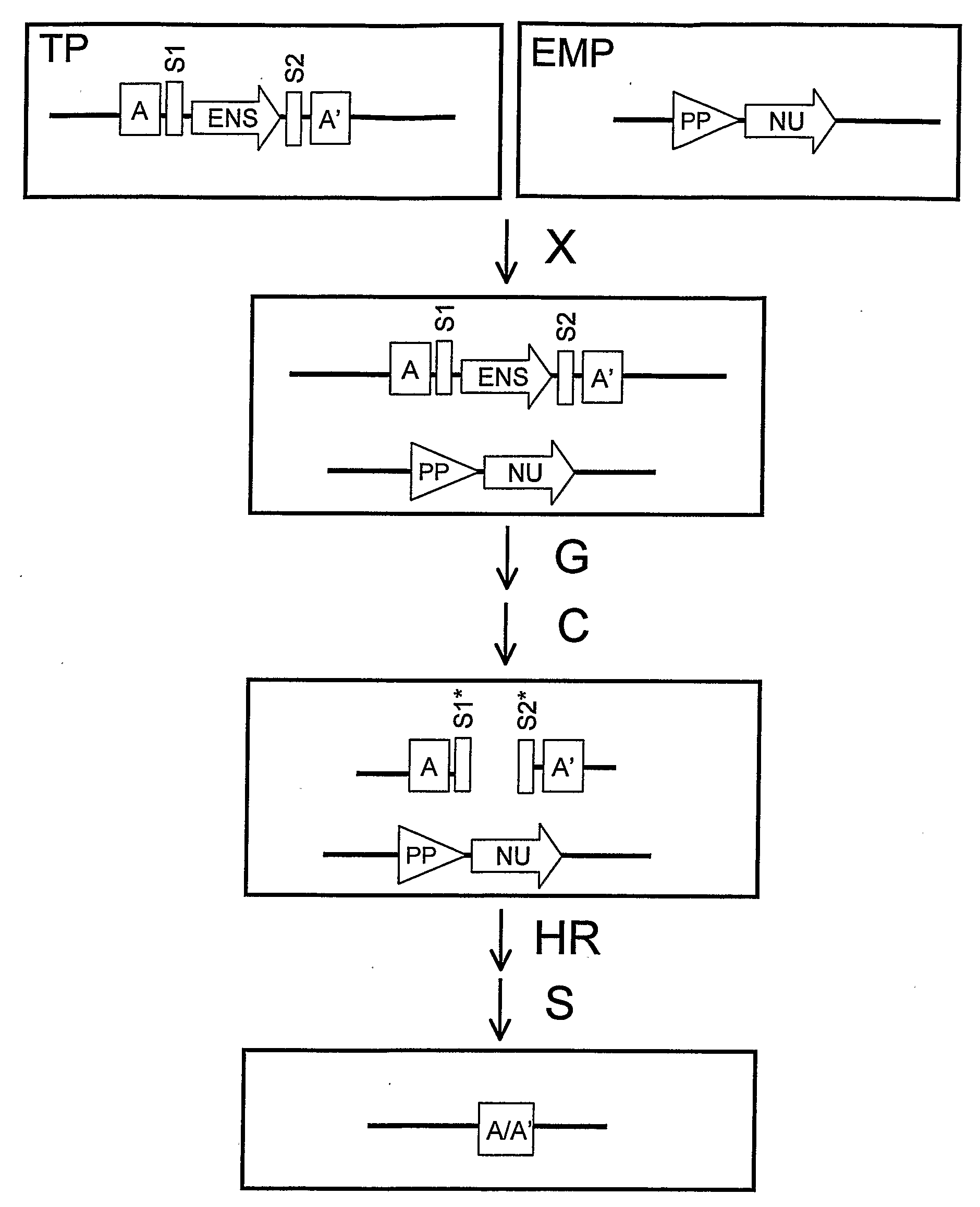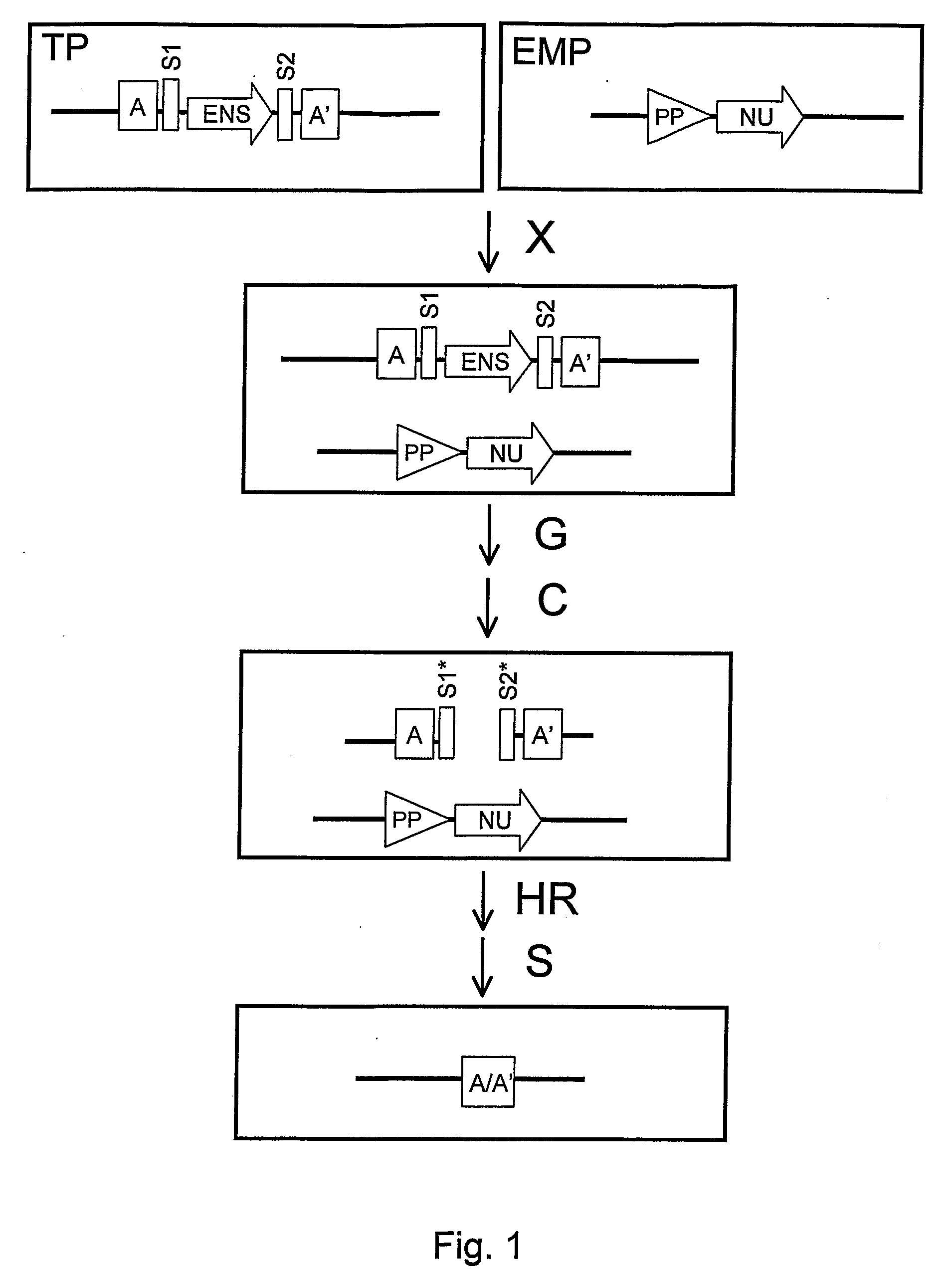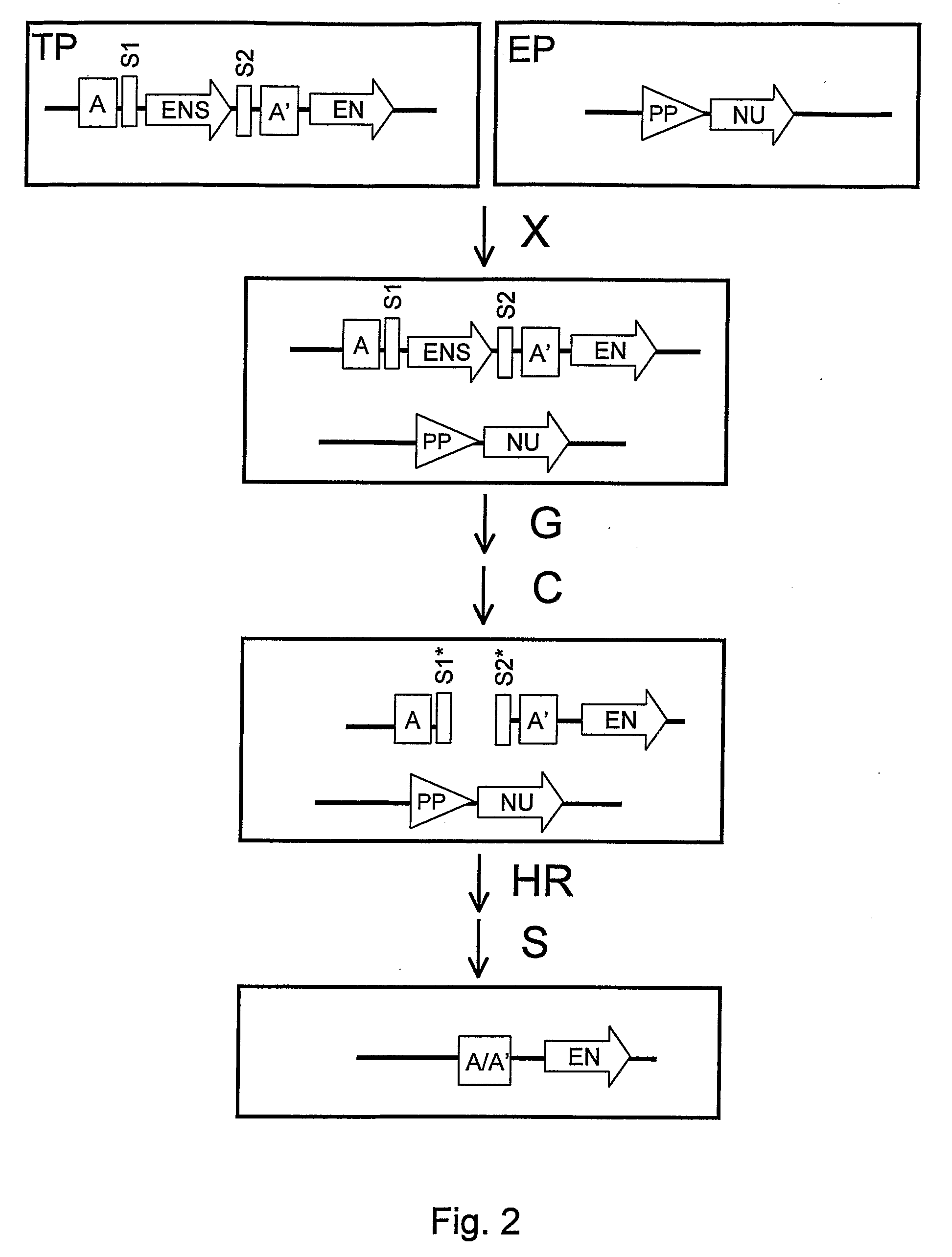Recombination Cassettes and Methods For Sequence Excision in Plants
a cassette and sequence technology, applied in the field of recombination cassettes and sequence excision in plants, can solve the problems of reversibility of reaction, no useful function, unwanted mutations,
- Summary
- Abstract
- Description
- Claims
- Application Information
AI Technical Summary
Benefits of technology
Problems solved by technology
Method used
Image
Examples
example 1
Plant Transformation
Example 1a
Transformation of Arabidopsis thaliana
[0338]A. thaliana plants were grown in soil until they flowered. Agrobacterium tumefaciens (strain C58C1 (pMP90)) transformed with the construct of interest was grown in 500 mL in liquid YEB medium (5 g / L Beef extract, 1 g / L Yeast Extract (Duchefa), 5 g / L Peptone (Duchefa), 5 g / L sucrose (Duchefa), 0.49 g / L MgSO4 (Merck)) until the culture reached an OD600 0.8-1.0. The bacterial cells were harvested by centrifugation (15 minutes, 5,000 rpm) and resuspended in 500 mL infiltration solution (5% sucrose, 0.05% SILWET L-77 (distributed by Lehle seeds, Cat. No. VIS-02)). Flowering plants were dipped for 10-20 seconds into the Agrobacterium solution. Afterwards the plants were kept in the greenhouse until seeds could be harvested. Transgenic seeds were selected by plating surface sterilized seeds on growth medium A (4.4 g / L MS salts (Sigma-Aldrich), 0.5 g / L MES (Duchefa); 8 g / L Plant Agar (Duchefa)) supplemented with 50 m...
example 1b
Agrobacterium-Mediated Transformation of Brassica napus
[0339]Agrobacterium tumefaciens strain GV3101 transformed with the plasmid of interest was grown in 50 mL YEB medium (see Example 4a) at 28° C. overnight. The Agrobacterium solution is mixed with liquid co-cultivation medium (double concentrated MSB5 salts (Duchefa), 30 g / L sucrose (Duchefa), 3.75 mg / l BAP (6-benzylamino purine, Duchefa), 0.5 g / l MES (Duchefa), 0.5 mg / l GA3 (Gibberellic Acid, Duchefa); pH5.2) until OD600 of 0.5 is reached. Petiols of 4 days old seedlings of Brassica napus cv. Westar grown on growth medium B (MSB5 salts (Duchefa), 3% sucrose (Duchefa), 0.8% oxoidagar (Oxoid GmbH); pH 5.8) are cut. Petiols are dipped for 2-3 seconds in the Agrobacterium solution and afterwards put into solid medium for co-cultivation (co-cultivation medium supplemented with 1.6% Oxoidagar). The co-cultivation lasts 3 days (at 24° C. and ˜50 μMol / m2s light intensity). Afterwards petiols are transferred to co-cultivation medium sup...
example 2
Constructs Harbouring Sequence Specific DNA-Endonuclease Expression Cassettes
PUM
| Property | Measurement | Unit |
|---|---|---|
| size | aaaaa | aaaaa |
| length | aaaaa | aaaaa |
| herbicide resistance | aaaaa | aaaaa |
Abstract
Description
Claims
Application Information
 Login to View More
Login to View More - R&D
- Intellectual Property
- Life Sciences
- Materials
- Tech Scout
- Unparalleled Data Quality
- Higher Quality Content
- 60% Fewer Hallucinations
Browse by: Latest US Patents, China's latest patents, Technical Efficacy Thesaurus, Application Domain, Technology Topic, Popular Technical Reports.
© 2025 PatSnap. All rights reserved.Legal|Privacy policy|Modern Slavery Act Transparency Statement|Sitemap|About US| Contact US: help@patsnap.com



